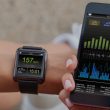How mobile sensing empowered West Des Moines with critical road network data
Navigating roads during the winter weather months can be quite hazardous for drivers on our roadways. In fact, 17 percent of all vehicle crashes happen during winter conditions. to solve this problem, communities need to improve road weather data accuracy to increase safety and efficiency.
From limited budgets and increasingly severe weather events to meeting the expectations of motorists and communities that expect clear roads, the application of de-icing chemicals, spreading of salt brine, and removal of snow and ice, government agencies responsible for clearing our roads to ensure travelers’ safety face more winter weather road maintenance challenges than ever.
For West Des Moines, Iowa, that means city maintenance crews must develop a plan before winter storms move in because many operational decisions (e.g., when and how much chemical or salt to apply to which roadways, how many plows to deploy at what time and in which locations, etc.) need to be made before a storm causes problems.
Many agencies tasked with clearing roads rely on information obtained from road weather information systems (RWIS) gathering information on roads or highways. Crucially important stationary systems that deliver robust, reliable and current atmospheric and pavement conditions on roadways at all times, RWISs are expensive and, as such, tend to be thinly dispersed throughout road networks. Because RWISs are stationary, there are segments of road between the stations for which weather data is not collected but are still being significantly impacted by a winter storm.
For West Des Moines, the volume of traffic, pavement surface state and other environmental factors varied significantly enough between the current RWISs in the city to create gaps between fixed stations, impeding effective operations and mitigation. Without the ability to gather accurate data pertaining to the environmental conditions affecting their roadways in the right location at the right time, effective winter weather road maintenance becomes extremely challenging.
The Solution: Resilient Mobile Sensor Technology and Big Data
Enter mobile-sensor technology and mobile-data collection to supplement RWISs.
The creation of road weather forecasting models that empower transportation agency and municipality decision-makers with the information they need to keep the roads safe predominately relies on static RWISs. However, today’s mobile sensors are able to monitor a growing list of atmospheric and road conditions, including air temperature, relative humidity, dew point, road pavement temperature, road surface condition status and pavement grip to deliver data pertaining to the environment in which the vehicle is traveling.
To read the complete article, visit American City & County.

















